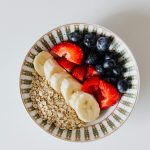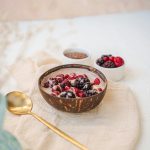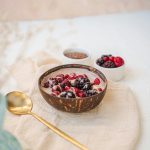Breakfast ideas Introduction

The mise en scène heritage in Taiwan has attracted many investors pursuing a idle hours lifestyle living in rural areas, unusually retirees. Numerous bed and breakfast (B&B) businesses have sprung up in Taiwan, run by family entrepreneurs who are self-employed, offering their redundant rooms for additional income. In some cases, B&Bs even offer a leisure space that reflects the owners’ lifestyle and dreams (Chou, 2008; Hsieh and Lin, 2010). In Nantou there are B&Bs built as European-style royal castles standing atop local peaks (Chen et al., 2016) . Statistics from the Tourism Bureau of Taiwan show that legally registered B&Bs have nearly tripled in the last decade, to 6652 businesses with 26,920 rooms in 2016 . However, average room occupancy rate of B&Bs is at around. This is the result of oversupply and homogeneity of B&Bs.brekfast ideas Therefore, this study explores what action the owners of B&B take in relation to exiting the business or implementing innovative solutions, for the sustainability of their B&Bs.Eating patterns, which include timing and duration of eating occasions as well as the types of foods and beverages consumed, begin to develop during infancy [126]. Breastfeeding helps infants develop internal hunger and satiation cues in order to acquire self-regulatory eating behaviors [126]. In addition, the flavors in the breastmilk and breakfast ideas are influenced by the mother’s diet, so infants can become accustomed to novel flavors (16). This flavoring of the milk is particularly important as infants will have an inherent preference for sweet or salty tastes, and repeated introduction of other tastes will promote acceptance of these flavors when they are experienced in solid food . Therefore, infants who are breastfed and have experienced these varied flavors may be more accepting of novel foods [130]. However, these data are not conclusive as the study designs varied in outcome measures used to assess children’s preferences
Method

A grounded theory using semi-structured interviews was used to collect the data supplied by the B&B owners in Taiwan. This Phenomenological engage in conversation helps the researchers to understand the dependent thematic topic of a phenomenon via coding, decoding, and tessellated analysis of collected data (Bamberger, 2000; Locke, 2001). B&Bs located in northern, central, southern, and eastern Taiwan were chosen to validate the representativeness of the study Acknowledgments We would like to thank the Australia Research Council, brekfast ideas SA Health and The City of Playford for their ongoing support of this project. We are appreciative of the valuable suggestions by the anonymous reviewers and Dr. Michelle Jones for comments on an earlier draft. Dr. Ruthie O’Reilly provided invaluable interviewing assistance. We wish to particularly thank all the research participants who so generously shared their time with us. moral stand blessing for the project was sought and given by The University of Adelaide Human moral stand Research Committee; Southern Adelaide Clinical Human scrutinization moral stand Committee/Department of Health and the Aboriginal Health Council moral stand Committee The views make barefaced in this publication do not definitely reflect South Australian government policies.Eating patterns, which include timing and duration of eating occasions as well as the types of foods and beverages consumed, begin to develop during infancy [126]. Breastfeeding helps infants develop internal hunger and satiation cues in order to acquire self-regulatory eating behaviors [126]. In addition, the flavors in the breastmilk and breakfast ideas are influenced by the mother’s diet, so infants can become accustomed to novel flavors (16). This flavoring of the milk is particularly important as infants will have an inherent preference for sweet or salty tastes, and repeated introduction of other tastes will promote acceptance of these flavors when they are experienced in solid food . Therefore, infants who are breastfed and have experienced these varied flavors may be more accepting of novel foods [130]. However, these data are not conclusive as the study designs varied in outcome measures used to assess children’s preferences
Participants

Adolescent girls were muster in from the Kansas City, KS area through advertisements, flyers, and email listserves to get involved in the study. Eligibility was determined through the followingBMI:no metabolic or neurological diseases or other health complications; (iv) not been clinically diagnosed with an eating disorder; (v) not currently or previously on a weight loss or other special diet in the past 6 months; (vi) documented regular menstrual cycles between 21–36 days in duration for the past 6 months; (vii) frequently eats lunch (i.e., ≥5 eating occasions/week); (viii) infrequently eats breakfast (i.e., ≤2 breakfast occasions/week); and (ix) right-handed.
Fretting about Food & Physique

Many athletes feel compulsion to have a perfect body, perfect diet, and ideally, perfect carrying out. The stress-inducing trait of perfectionism often squeeze athletes to not only become stronger and speedily,brekfast ideas but also leaner and food-phobic. We have seen perfection play out with football phenom Tom Brady. While he is a poster child for the benefits of eating ”perfectly,” he also has great mental strength that keeps him focused on his goals without getting side-tracked by comparisons. Most of us are a bit more insecure than Tom and end up comparing ourselves to others. Take note: To compare is to despair! Please stop side by side your physique and your food choices to those of your Strongest matches, friends, and family! Here are grand design to help you fret less and instead gain conviction with your food possibility and your physique.
Nutrition Supplement Comparisons

I often lawyer athletes who wonder if they can nourish their skeleton with real food instead of gate money supplements. As one athlete sheepishly asked, “I don’t take any vitamin pills. Should I? My teammates takes a handful of them..” Let me reassure you that opting out of supplements is okay (and can save you bundles of money) . If you eat wisely 85-90% of the time, you are likely getting the vitamins and minerals and protein you need, with a few possible exceptions (iron, vitamin D)
Development of eating patterns

Eating patterns, which include timing and duration of eating occasions as well as the types of foods and beverages consumed, begin to develop during infancy [126]. Breastfeeding helps infants develop internal hunger and satiation cues in order to acquire self-regulatory eating behaviors [126]. In addition, the flavors in the breastmilk and breakfast ideas are influenced by the mother’s diet, so infants can become accustomed to novel flavors (16). This flavoring of the milk is particularly important as infants will have an inherent preference for sweet or salty tastes, and repeated introduction of other tastes will promote acceptance of these flavors when they are experienced in solid food . Therefore, infants who are breastfed and have experienced these varied flavors may be more accepting of novel foods [130]. However, these data are not conclusive as the study designs varied in outcome measures used to assess children’s preferences
Conclusion of breakfast ideas

As predicted, people tended to be relatively rigid about what should be consumed at breakfast. They assign value-laden judgments to food items, perceiving the foods typically consumed at breakfast as better suited for breakfast than other foods, which predicts their decisions to reject atypical breakfast foods and breakfast ideas that are healthier and more nutritious.

